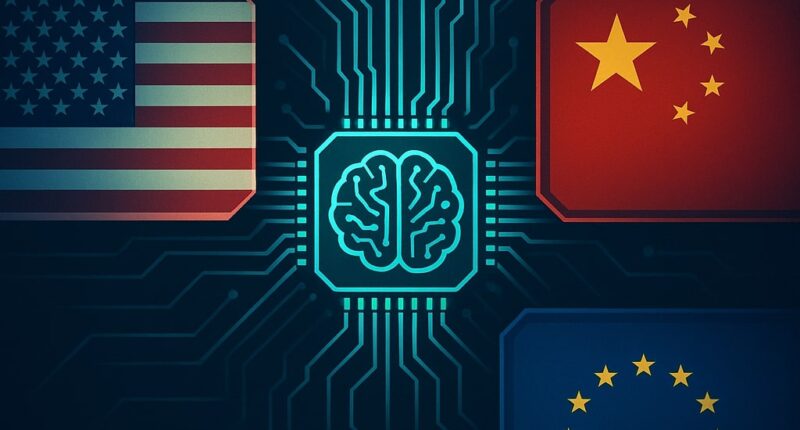Artificial Intelligence (AI) has emerged as one of the most powerful technologies of the 21st century. Nations are now locked in what experts describe as the global AI arms race—a fierce competition to secure leadership in AI research, applications, and governance. This race goes far beyond technological progress; it represents a struggle for military advantage, economic growth, and geopolitical influence.
Why AI Has Become the New Battleground
AI is often compared to electricity or the internet because of its transformative impact. It is revolutionizing industries, reshaping national defense, and determining how data is controlled. Countries leading in AI will enjoy major benefits in:
-
Defense and Security – Autonomous drones, AI-powered surveillance, and cyber warfare.
-
Economic Competitiveness – Smarter automation, improved logistics, and data-driven decision-making.
-
Global Influence – Setting international standards, controlling digital infrastructure, and guiding the ethics of AI use.
In this sense, AI dominance is directly tied to a nation’s global standing and future prosperity.
Key Players in the Global AI Race
United States
The U.S. maintains an edge with its tech giants such as Google, Microsoft, and OpenAI. Private sector innovation, combined with government initiatives, drives continuous breakthroughs in natural language processing, robotics, and defense AI systems.
China
China is arguably the most determined competitor, aiming to be the global leader in AI by 2030. With strong state funding, massive datasets, and integration into surveillance systems, China is rapidly closing the gap with the U.S.
Europe
The European Union focuses on ethical AI and regulatory leadership. While it may not match the U.S. or China in raw innovation speed, Europe is shaping the future through frameworks that emphasize privacy, human rights, and responsible AI development.
Emerging Competitors
Nations like Russia, Israel, India, and Japan are also making heavy investments in AI research, recognizing its strategic importance for both security and economic modernization.
Risks of an Accelerating AI Arms Race
While competition drives rapid innovation, it also creates significant dangers:
-
Weaponization of AI – The rise of autonomous weapons raises concerns about accountability and human control.
-
Cybersecurity Threats – AI-driven attacks could outpace current defense measures.
-
Global Inequality – Countries unable to keep up risk technological dependence.
-
Lack of Global Standards – Without international agreements, AI development may spiral into destabilizing uses.
The Future of AI Dominance
The future of the global AI arms race depends on whether nations choose rivalry or cooperation. While the U.S. and China are currently leading, long-term dominance will rely not only on innovation but also on governance, ethics, and responsible deployment. Countries that balance technological progress with ethical frameworks may ultimately set the rules for AI’s global role.
Conclusion
The global AI arms race is reshaping the balance of power in the digital era. Nations that achieve AI supremacy will gain economic, military, and geopolitical advantages. However, without collaboration and clear regulations, the competition risks fueling instability. The challenge for the world is not only who wins the AI race, but how AI can be developed responsibly to benefit all of humanity.
Suggested Sources & References
-
Allen, G. & Chan, T. (2017). Artificial Intelligence and National Security. Belfer Center for Science and International Affairs, Harvard Kennedy School.
🔗 https://www.belfercenter.org -
National Security Commission on Artificial Intelligence (NSCAI). (2021). Final Report.
🔗 https://www.nscai.gov -
State Council of the People’s Republic of China. (2017). New Generation Artificial Intelligence Development Plan.
🔗 http://www.gov.cn -
European Commission. (2021). Proposal for a Regulation on Artificial Intelligence.
🔗 https://ec.europa.eu -
PricewaterhouseCoopers (PwC). (2018). The Macroeconomic Impact of Artificial Intelligence.
🔗 https://www.pwc.com -
Stanford University. (2023). AI Index Report 2023.
🔗 https://aiindex.stanford.edu -
UNICRI & UNICRI Centre for AI and Robotics (2021). Artificial Intelligence and Robotics in the Military Domain.
🔗 https://www.unicri.it









